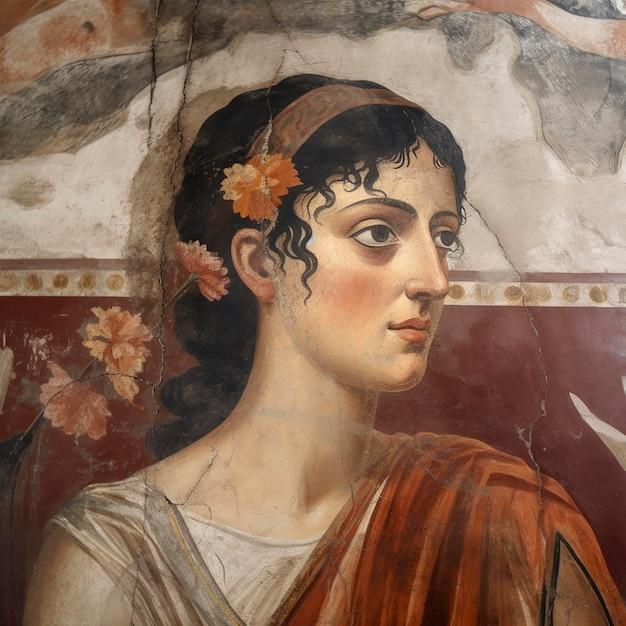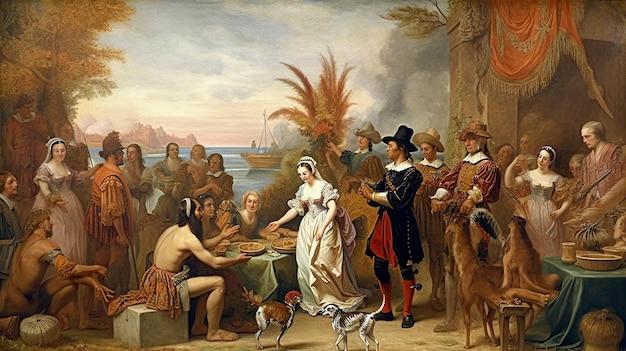The Renaissance, a period of cultural and intellectual rebirth that took place from the 14th to the 17th century, marked a significant turning point in the history of art and literature. During this time, artists and writers began to break away from the established traditions of the medieval period and explore new ideas and techniques. The impact of the Renaissance on art and literature was profound, shaping the course of creativity for centuries to come.
In English literature, the Renaissance brought about a multitude of changes. Writers turned their focus towards humanism, embracing the study of classical texts and placing a greater emphasis on the individual and human experience. This shift led to the exploration of new literary forms, such as the sonnet and the play, and the emergence of influential figures like William Shakespeare and John Donne.
Artists of the Renaissance, on the other hand, delved into a renewed sense of curiosity and realism. They sought to capture the beauty of the natural world and the complexities of the human form, refining techniques such as perspective and chiaroscuro. Famous artists like Leonardo da Vinci, Michelangelo, and Raphael emerged during this period, leaving an indelible mark on the art world.
In this blog post, we will delve deeper into the impact of the Renaissance on art and literature. We will explore the reasons behind the Renaissance’s transformative nature, its pivotal characteristics, and the types of literature that emerged during this time. Join us on this journey to uncover the essence of the Renaissance and its enduring legacy in the realms of art and literature.

How the Renaissance Transformed the World of Art and Literature
The Renaissance, with all its grandeur and intellectual fervor, left an indelible mark on the realms of art and literature. Let’s dive into the enchanting story of how this transformative period shaped the creative landscape, as we explore the vibrant colors, captivating brushstrokes, and delightful quill writings that emerged during this remarkable era.
The Artistic Awakening: A Canvas of Imagination
Artists of the Renaissance era broke free from the shackles of medieval conventions and embraced a world of limitless possibilities. Inspired by the ancient Greek and Roman civilizations, they infused their works with realism, perspective, and emotion, giving birth to a new aesthetic.
Embracing Humanism: A Portrait of Individualism
In stark contrast to the medieval focus on otherworldly matters, Renaissance art celebrated the human experience. Artists like Leonardo da Vinci, Michelangelo, and Raphael adorned their masterpieces with lifelike portraits and expressive human forms that became the hallmark of this era. Every brushstroke seemed to breathe life onto the canvas, creating an intimate connection between the artwork and the viewer.
The Power of Perspective: Unveiling New Dimensions
One of the most remarkable advancements of the Renaissance was the discovery and application of linear perspective. Artists tapped into the mathematical principles of depth and distance, endowing their paintings with a sense of spatial realism never seen before. As viewers, we were transported into meticulously crafted scenes that seemed to stretch beyond the confines of the canvas itself.
Light and Shadows: Illuminating the Artistic Realm
The mastery of light and shadows, known as chiaroscuro, became a defining feature of Renaissance art. Artists skillfully played with the interplay of light and dark, creating a sense of depth, dimension, and drama. These subtle nuances added a magical touch to the paintings, immersing the viewer in a world where time stood still.
The Literary Revolution: The Written Word Unleashed
While the Renaissance is often celebrated for its artistic achievements, its impact on literature is equally profound. The era witnessed a literary explosion, marked by remarkable works that challenged convention, explored new ideas, and forever shaped the world of words.
The Age of Humanism: Celebrating the Written Word
Humanism, the intellectual movement that flourished during the Renaissance, placed human reason, potential, and individualism at the forefront. This shift in perspective led to a surge in literary works that explored the human condition, touched upon the realms of philosophy, and celebrated the power of human thought and expression.
From Manuscripts to Print: Paving the Path for Knowledge
The invention of the printing press by Johannes Gutenberg in the fifteenth century revolutionized the world of literature. Books were no longer exclusive to the elite; knowledge could now be disseminated to the masses. This democratization of the written word opened new avenues for intellectual exchange and accelerated the spread of ideas, fuelling the literary revolution.
The Birth of the Renaissance Man: A Multifaceted Figure
In this era, the concept of the Renaissance Man emerged—a figure who excelled in multiple disciplines, embracing both art and literature. These polymaths, such as Leonardo da Vinci and Michelangelo, pushed the boundaries of creativity in both fields, leaving an enduring legacy that continues to inspire generations.
A Timeless Legacy: Inspiring the Future
The impact of the Renaissance on art and literature reverberated far beyond its years. Its ideals of humanism, individualism, and creative expression continue to shape our artistic and literary endeavors today. The Renaissance serves as a constant reminder that the human spirit is boundless, capable of achieving extraordinary feats when fueled by passion and imagination.
So let us cherish the Renaissance, its artistry, its literature, and the profound impact it had on the world, as we continue to draw inspiration from the brushes and quills of that remarkable time. May its vibrant hues and poetic verses forever grace our hearts and minds.

FAQ: How Did the Renaissance Shape Art and Literature?
The Renaissance, a period of cultural and artistic rebirth in Europe, had a profound impact on art and literature. In this FAQ-style subsection, we’ll explore the main questions surrounding the influence of the Renaissance on these creative fields.
What Was the Impact of the Renaissance on English Literature
The Renaissance brought revolutionary changes to English literature. It marked a shift from the medieval traditions of storytelling and religious texts to a focus on humanism and individualism. Writers began to explore new themes and styles, emphasizing the beauty of language and the depth of human experience. Figures such as William Shakespeare and John Milton emerged, leaving an indelible mark on English literature that still resonates today.
What Were the Artists of the Renaissance Focused on
During the Renaissance, artists shifted their focus from solely religious subjects to a wider range of topics. While religious themes still held significance, artists began to depict mythological stories, portraits, landscapes, and scenes from daily life. They strived for realism, using techniques like perspective and chiaroscuro to create depth and light in their works. The Renaissance artists celebrated the beauty of the human form, using proportion and anatomical accuracy to capture the essence of their subjects.
Why is it Called the Renaissance
The term “Renaissance” comes from the French word meaning “rebirth.” It refers to the revitalization of cultural, intellectual, and artistic pursuits that occurred between the 14th and 17th centuries in Europe. This period saw a renewed interest in the classical texts and philosophies of ancient Greece and Rome, as well as a surge of creativity and innovation in various artistic disciplines.
How Did the Renaissance Influence Art and Literature
The Renaissance revolutionized art and literature by placing a renewed emphasis on humanism, individualism, and innovation. Artists and writers broke away from the constraints of medieval traditions, exploring new styles, themes, and techniques. The introduction of perspective in art allowed for more realistic depictions, while in literature, human emotions and experiences took center stage. This period laid the foundation for the artistic and literary achievements that followed and set the stage for the modern world.
What is the Renaissance and What Caused it
The Renaissance was a cultural and intellectual movement that emerged in Europe during the 14th century and lasted until the 17th century. It was characterized by a resurgence of interest in the arts, sciences, philosophy, and exploration. The causes of the Renaissance are multi-faceted, but they include factors such as the decline of the feudal system, increased trade and wealth, the rediscovery of classical texts, and the patronage of wealthy individuals and families who supported the arts.
What are Three Main Characteristics of the Renaissance
-
Humanism: The Renaissance placed a strong emphasis on the worth and potential of human beings, celebrating their achievements, abilities, and capacity for creativity.
-
Individualism: Renaissance thinkers emphasized the uniqueness and individuality of each person. This focus on personal identity and expression is reflected in the art and literature of the period.
-
Innovation: The Renaissance was a time of exploration and discovery, both geographically and intellectually. This spirit of innovation led to groundbreaking advancements in various fields, including art and literature.
What Types of Literature Were Written During the Renaissance
The Renaissance witnessed the production of various forms of literature, including poetry, drama, essays, and prose. Poets like William Shakespeare and Edmund Spenser crafted sonnets and epic poems, while playwrights created timeless dramas like “Hamlet” and “Romeo and Juliet.” Renaissance writers embraced the power of language, using it to communicate complex ideas and emotions in their works.
Why Was Art Important in the Renaissance
Art played a central role in the Renaissance as it was seen as a testament to human creativity and achievement. It was through art that ideas, values, and emotions were expressed and shared. Visual representations in paintings and sculptures helped to shape the cultural and intellectual landscape of the time, capturing the essence of the era and immortalizing its values for future generations.
What Did Renaissance Art and Literature Focus On
Renaissance art and literature focused on the celebration of human potential, both intellectually and creatively. Artists and writers sought to capture the beauty of the natural world, explore the depths of human emotion, and delve into the complexities of the human mind. They championed individual expression and used their works to comment on societal, political, and cultural issues of the time.
What Does Renaissance Literature Stand For
Renaissance literature stands for a departure from medieval traditions and an embrace of new ideas, language, and poetic forms. It symbolizes a reawakening of humanism, placing human experiences, emotions, and capacities at the heart of literary expression. Renaissance literature stands as a testament to the enduring power of the written word and its ability to capture the essence of the human experience.
Who Were the Famous Figures in Renaissance Literature
In Renaissance literature, several figures achieved great fame and acclaim. William Shakespeare, often regarded as the greatest playwright in the English language, produced enduring works such as “Hamlet,” “Macbeth,” and “Romeo and Juliet.” Other renowned Renaissance writers include John Milton, known for his epic poem “Paradise Lost,” and Geoffrey Chaucer, whose “Canterbury Tales” is a literary masterpiece that showcases the diversity and wit of medieval English society.
How Would You Describe the Renaissance
The Renaissance, a period of enlightened creativity and intellectual fervor, serves as a bridge between the medieval world and the modern era. It represents a time marked by a rejection of the past’s constraints and a determination to explore new horizons. The Renaissance was a celebration of human potential, giving birth to some of the most exceptional artistic and literary achievements that continue to inspire and captivate us today. So, put on your velvet doublet, grab a quill, and prepare to be whisked away to a time of unparalleled creativity and innovation!
